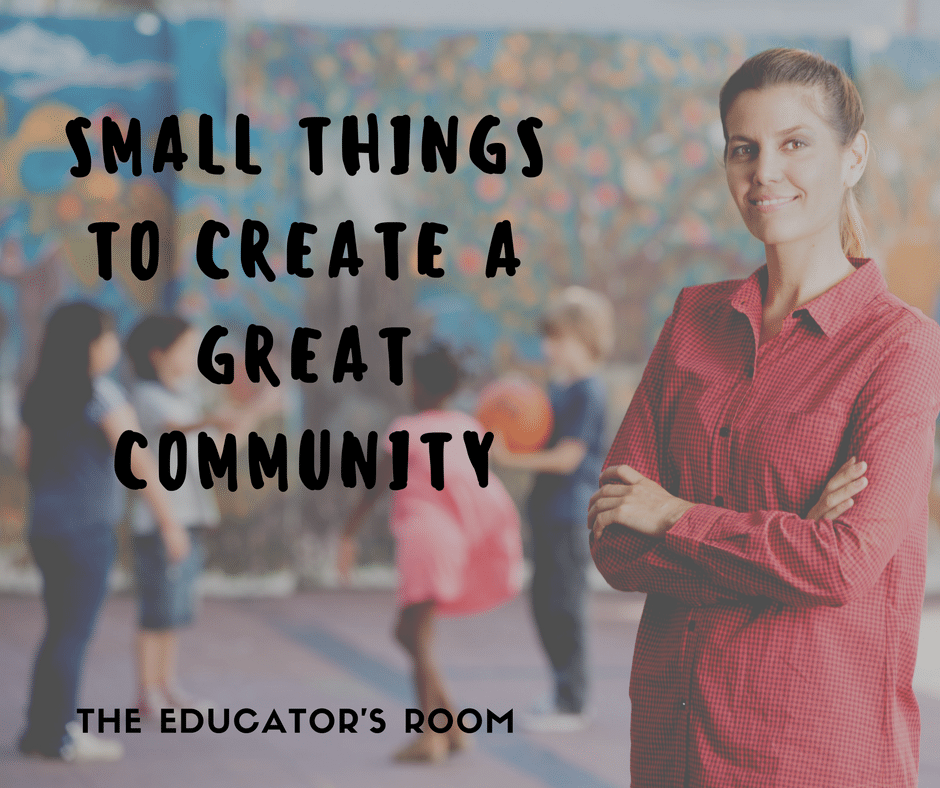At the end of last school year, after I informed my students that I would be leaving the district, they showered me with gratitude. They wrote notes; they gave speeches; they made a scrapbook; they spent money on gifts; they arranged parties with food; they collaborated with teachers and counselors to surprise me with a farewell song. Teachers from all departments came to say goodbye, and several of them said that the district was losing a great teacher. One teacher, who I rarely spoke to, approached me, but she didn’t say goodbye. Instead, she asked me, “What’s your secret? What did you do to get them to care about you in this way?” I didn’t know how to answer her, so I just smiled. When a few other colleagues asked me similar questions, I started to think back to the beginning of the school year. Nothing big stood out to me. And that’s when I realized that it was a series of small things that had forged this community. The following tactics aren’t revolutionary by any means, and most teachers naturally incorporate them, but I wish someone had pointed them out to me during my first two years of teaching. After all, the small things matter.
[fusion_builder_container hundred_percent=”yes” overflow=”visible”][fusion_builder_row][fusion_builder_column type=”1_1″ background_position=”left top” background_color=”” border_size=”” border_color=”” border_style=”solid” spacing=”yes” background_image=”” background_repeat=”no-repeat” padding=”” margin_top=”0px” margin_bottom=”0px” class=”” id=”” animation_type=”” animation_speed=”0.3″ animation_direction=”left” hide_on_mobile=”no” center_content=”no” min_height=”none”][bctt tweet=” small things that had forged this community” username=”EducatorsRoom”]
Personally Greet Every Student. I’m reading a book about changing behaviors, and one of the case studies discusses how teachers motivated a frequent-office-flyer to become a student who wanted to stay in class. When asked about his favorite teacher, the disruptive student noted that the teacher always made him feel welcomed in her class. Unlike his other teachers, this teacher made a point to greet every student at the door. At my school, teachers had to stand at the classroom door for supervision, so saying hello to students as they entered wasn’t anything over the top, but saying, “Good morning, Matt” makes a difference. Not only did this tactic help me learn their names faster, but it also helped me establish them as individuals. Students want to be known. During those brief interactions, I learned about their likes and dislikes; I gauged their moods; I encouraged them to talk. It’s a simple change, but it yields great results.
Haunt Common Areas. My students were more apt to ask for help when I wasn’t in my classroom. Whenever they entered my classroom during non-scheduled times, they were apologetic, as if they were an inconvenience. However, when I started completing work in the library after school (I wanted easier accessibility to the copier), students approached me without apologizing. Some even chose to sit at my table when they didn’t need help. By leaving my “domain,” students saw me as a person, not the teacher who lives in a coffin under the desk. Think about eating in the cafeteria or sitting in the student section during the sporting event. They’ll see you differently.
Attend Extracurricular Events. I was not invested in my first school, so I spent as little time as possible at work. Attending a football game was not how I wanted to spend my Friday night. Once I found a district to settle in, I attended sporting events and theater productions. Students introduced me to their parents and friends. We talked about non-academic topics. When students humanize their teachers, they are better behaved in class. Last year I posted a calendar on a board for students to write down activity dates, and I tried to attend one for every student. Even though I spent my personal time on their activities, the payout was worth it. The disruptive student listened respectfully. The unmotivated student turned in his homework. The reserved student spoke up during discussions. Seeking them outside of class time shows them that you don’t see them as a job; you are choosing to be with them.
Have a Community Board. Remember when your mom posted your great work on the refrigerator? Students want that approval. One year I posted students’ essays and projects. As best as possible, I tried to recognize each person once. When I handed back work, students eagerly waited to hear who had made the class refrigerator. Not only was I celebrating great work and progress, but also students were given guidance through example. One year I tried something else: we posted inspirational quotes from literary works. By allowing students to nominate quotes, they openly discussed how literature related to them. The content doesn’t matter as long as your class jointly collaborates on the board.
Ask For Their Help. As I was writing the junior curriculum from scratch, I asked a few trusted students for their opinions. Once they spread the word about my ideas, other students approached me with opinions. Eventually, my students arranged biweekly meetings to reflect on past assignments and edit future assignments. I listened to their feedback and changed assignments as needed. Even though I had the ultimate authority, the students were empowered by knowing their voices were being heard. This tactic creates student buy-in. Anytime a student questioned the assignment, one of my curriculum team members would explain the reasoning behind the assignment. With the engaging assignments came better results. It’s humbling to ask for students’ opinions, but for students to feel invested, they need to find their voices.
Establish a Legacy. At the end of each school year, the students have to complete two tasks as their rites of passage: take a class photo and sign the class table. I post the photos on a bulletin board. During the first week of classes, most of my previous year’s students stop by my room to check out the bulletin board and to find their signature. This tactic gives them a concrete reminder of their successes. It also provides an excuse for continued contact. Once again, they know that they are more than a job to me.
Several times throughout last year I doubted my effectiveness as a teacher, but as I drove away on the final day, I knew that I had changed my students’ lives. The strong community was the foundation of my success. When the students believe that we care about them beyond what is required of our jobs, they care about our class and its work. They do better; they are better. On the flip side, when we partner with them as a unified class, we, the teachers, do our best work.

[/fusion_builder_column][/fusion_builder_row][/fusion_builder_container]





